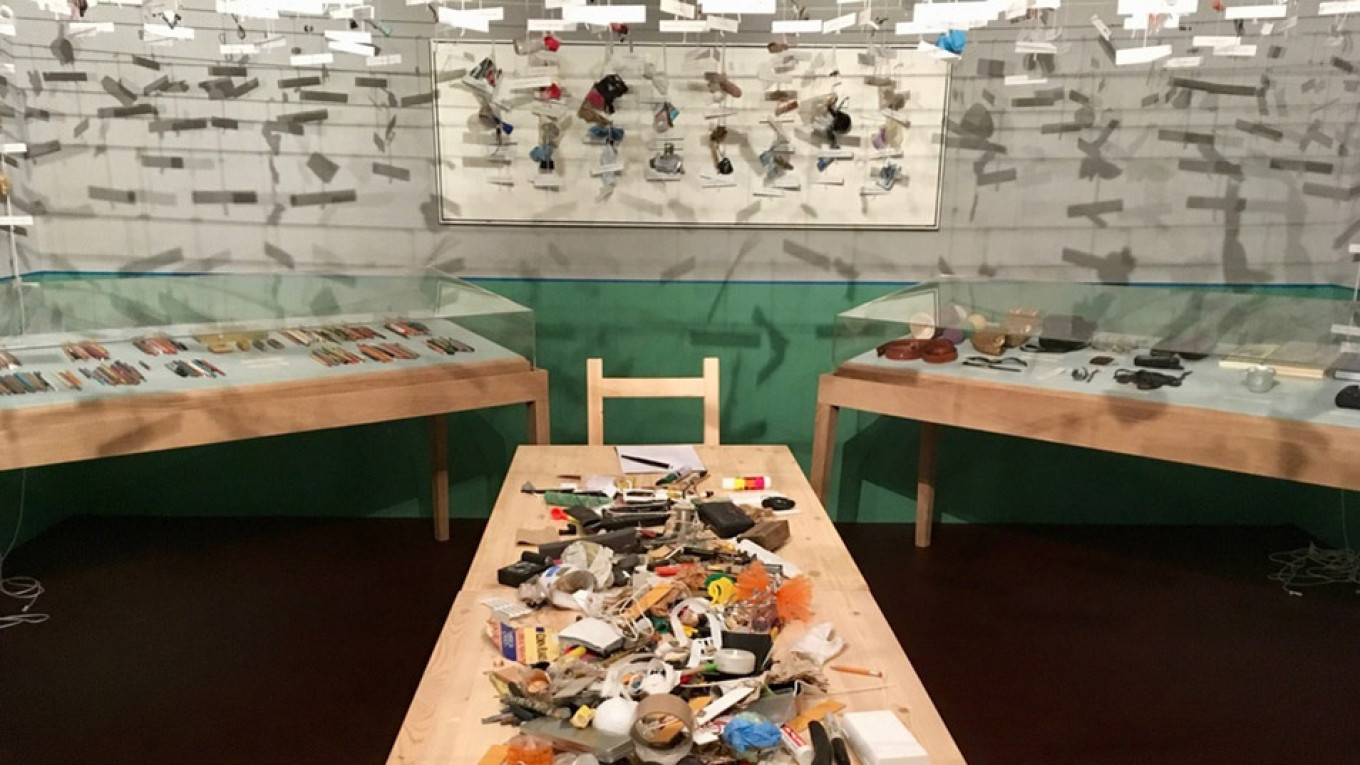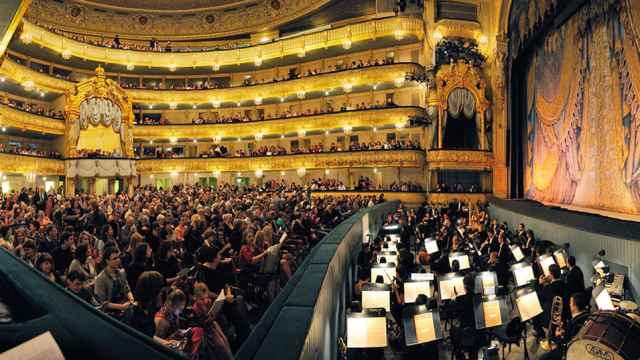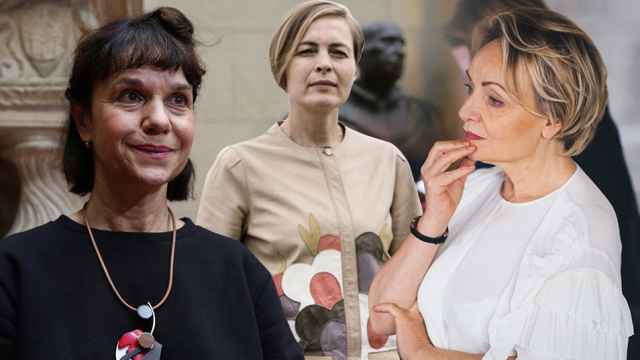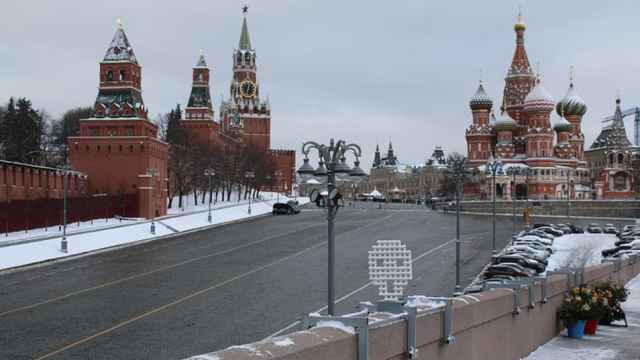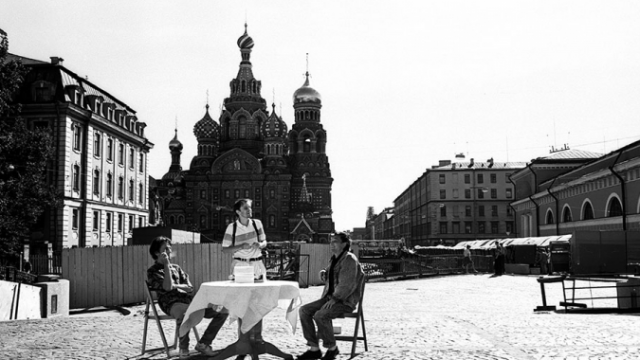Marx and his Soviet interpreters made a basic mistake when imagining close-knit human communities and the communist state: They failed to realize that hell is other people from whom we try our best to escape! This hell is often intangible. And it is almost impossible to grasp. But in installations now at the New Tretyakov Gallery, Ilya Kabakov does just that.
A non-conformist artist who emigrated from the Soviet Union in 1987, Ilya Kabakov is best known for his conceptual works. And in three installations at the beginning of the “Not Everyone Will Be Taken into the Future” exhibition, Ilya captures the dread and anxiety of communal life through artworks in which you are completely immersed in the Soviet-era apartments of a few fictional characters.
The first of these “total installations” depicts the clutter and mania of a man who collects small personal items, labels them, and then can never throw anything away. The second is almost out of a Bulgakov novel and involves pots and pans floating aimlessly through a shared kitchen corridor.
The final installation is Ilya’s most famous. “The Man Who Flew into Space from His Apartment” consists of a home-made catapult strung-up to the ceiling of a room covered in Soviet propaganda. Once released from his primitive slingshot, the “astronaut” blasts a hole in his roof and sails through space. And then a neighbor tells us in all seriousness that the flight was a success! Of course, what counts as a “success” here remains unclear. But it is not difficult to see Ilya’s bleak and comical art as a poignant critique of communal living and the Soviet Union, generally.
Although these installations are alone worth a trip to the Tretyakov, they are just part of an exceptional (and exceptionally demanding) exhibition of the work that Ilya and his wife, Emilia, produced over the past 50 years.
An inviting maze
At the center of the show is a labyrinth in which Ilya describes his mother’s life under Stalin as “one long, dark corridor…illuminated by weak, 40-watt lightbulbs.”
You enter the maze via a small, unsuspected door cut into the side of a massive gallery displaying some of Ilya’s more recent paintings. Hanging on the walls in the labyrinth are old pictures of Soviet landscapes set alongside chilling stories of the homelessness, starvation, and anti-Semitism that Ilya’s mother endured. As you wend your way to the heart of the installation, you hear Ilya singing a Russian folk song. Yet when you reach the source of the sound, all you see is an empty room with bricks strewn across the floor and a well-worn broom.
Defeated, all you can do is press on through the maze. And when you finally step outside, you are confronted with a rather bright ladder that shoots up to the sky. At the top of the ladder is a tiny person standing on the last-step, precariously reaching out to touch an angel. The rest of the chamber is filled with cheerful paintings, a pair of angel wings, and a description of the type of ladder you need to build if you hope to converse with a divine being. The sense of relief when entering this room after exiting the labyrinth is palpable.
But any optimism you might feel is soon dashed by the absurdity of it all. Ilya confirms this farce when he writes: “An encounter with an angel is always an extreme event; it always happens at a moment of crisis in a person’s life. And the person himself, being in a state of crisis and in need of help, conjures it.” There are, in other words, no ladders, and no angels; only emergencies and illusions.
A departing train
This brings you to the installation after which the exhibition is named: “Not Everyone Will Be Taken into the Future.” At the far end of a dark and cavernous gallery, you see the taillights of a departing train with a destination marker that reads: “Not everyone will be taken into the future.” On the platform from which the train is leaving, several abstract paintings that resemble Ilya’s early work are scattered about and a few have even been knocked onto the tracks.
The easy reading is that Ilya fears his work will be left behind or that it simply won’t survive the Soviet purges. But here is the catch: there is no one on the train and the room it is barreling into is empty. In fact, the next installation is a mock museum with the lighting on but no paintings on the wall. And Bach’s macabre “Passacaglia and Fugue in C Minor” is playing ominously in the background. When you combine “Not Everyone Will Be Taken into the Future” with “The Empty Museum,” the point is clear: There is no future, and there is no escape.
But happily, we get to enjoy the Kabakovs’ genius at the New Tretyakov until January 13.
10 Ulitsa Krymsky Val. Metro Park Kultury, Oktyabrskaya. www.tretyakovgallery.ru


